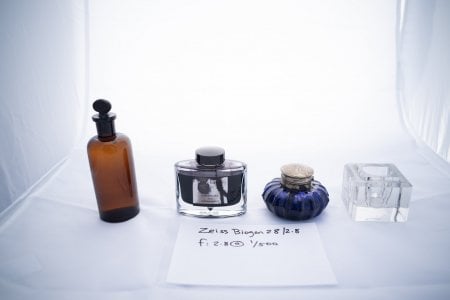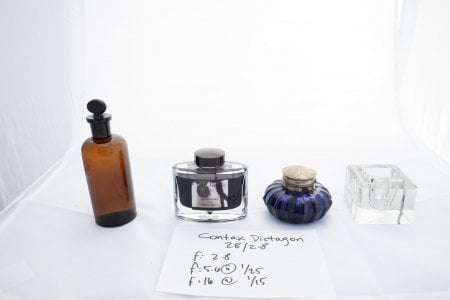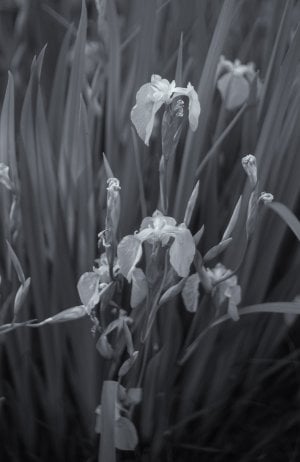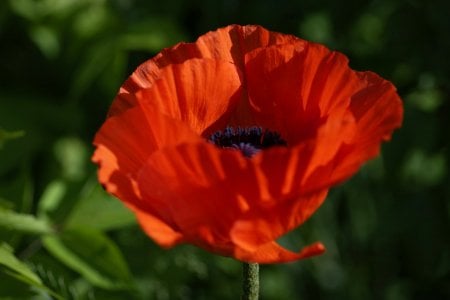Benjamin Marks
Mentor
And just to jump to the main comparison here, here's the 28 Summicron series. Note the significant light fall-off at the corners due to the non-retrofocal design. Now, not to worry, if you love your Summicron, as I love mine, there is a fix for this. But there is no doubt that out of the camera, the vignetting at f:2 on this lens is worse than what will follow:

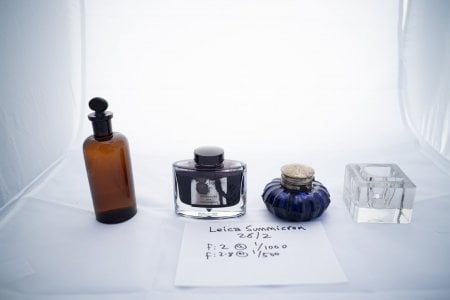
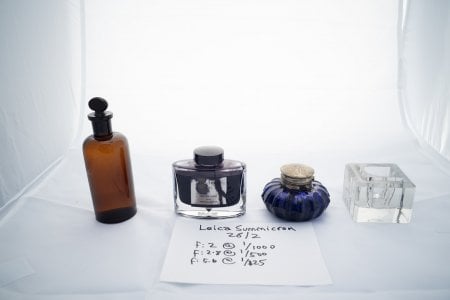
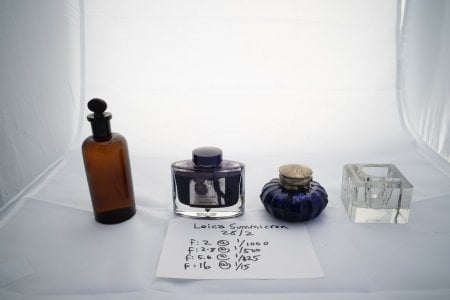




Benjamin Marks
Mentor
Perhaps the obvious/fair comparison is with the Nikon 28/2 Nikkor AiS -- at least among the lenses I own. All my other 28's are f:2.8 (or slower), so it makes sense to post the Nikon pictures next:
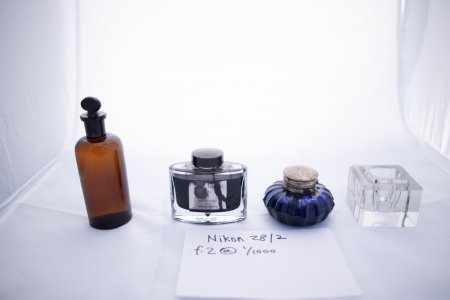
There's a little vignetting in the corners, but already at f:2 the Nikon is better than any of the Summicron shots in terms of this one optical quality.

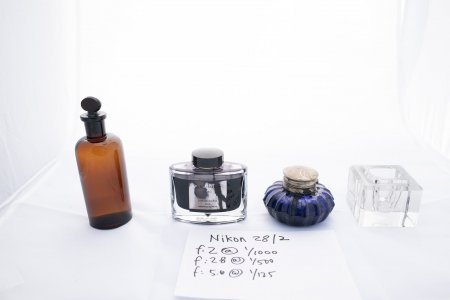


There's a little vignetting in the corners, but already at f:2 the Nikon is better than any of the Summicron shots in terms of this one optical quality.



Benjamin Marks
Mentor
Benjamin Marks
Mentor
The G-Biogon was the worst lens in the test, both in terms of vignetting, and flare. You can see that the images are a little soft at all apertures compared to the other lens in the test. I suspect the lens needs a cleaning. This G-Biogon was converted to M mount in Japan, before the age of mirrorless cameras.
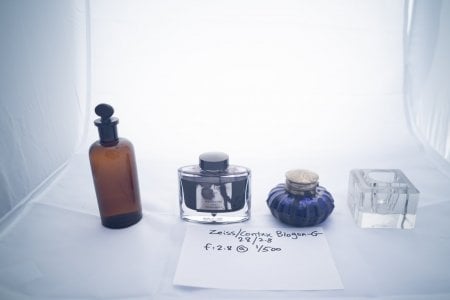
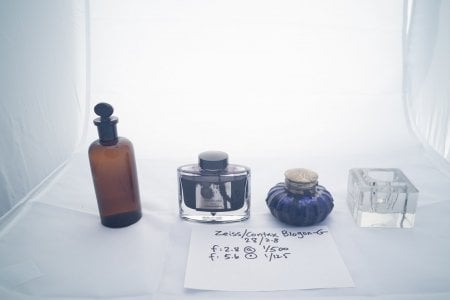
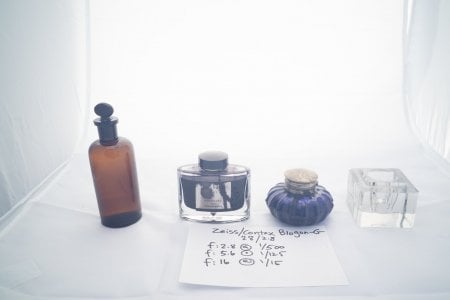



Benjamin Marks
Mentor
wlewisiii
Just another hotel clerk
Thanks. I'm planning on a Z5 later this summer for my M, S, M42, F & FD lenses.
Benjamin Marks
Mentor
The Pentax manual SMC-A 2.8 lens also did fine:
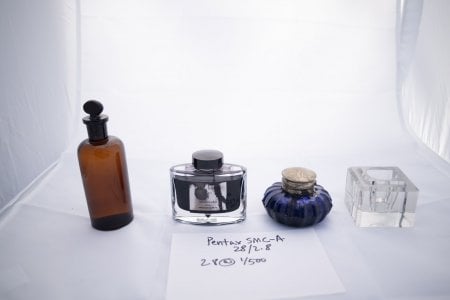
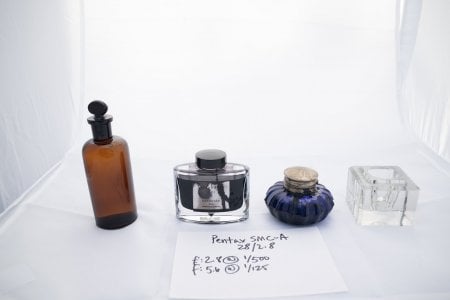
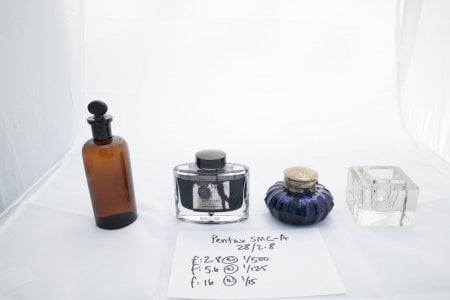
Also available for less than $100 these days. Just to be clear: the baseline vignetting of this lens is superior to the 28 Summicron for between 1/12 and 1/17 of the price. Of course, lenses have other qualities and each of us makes decisions about these tradeoffs all the time. Bokeh, focal zone transition, color, abberations. . . . I am just saying that the Summicron was designed for something slightly different than what's going on here and it shows in the results.



Also available for less than $100 these days. Just to be clear: the baseline vignetting of this lens is superior to the 28 Summicron for between 1/12 and 1/17 of the price. Of course, lenses have other qualities and each of us makes decisions about these tradeoffs all the time. Bokeh, focal zone transition, color, abberations. . . . I am just saying that the Summicron was designed for something slightly different than what's going on here and it shows in the results.
Benjamin Marks
Mentor
Benjamin Marks
Mentor
Benjamin Marks
Mentor
So what does this all mean? Well, maybe not that much in the final analysis. These are digital images, after all, and their output is inherently malleable. Remember that 28 Summicron image at f:2? Here it is again:
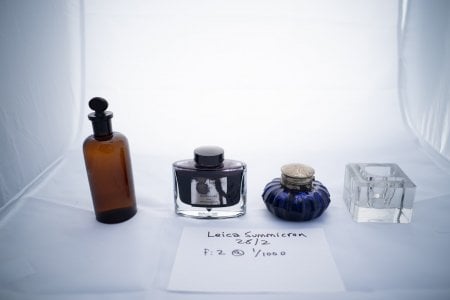
Here is the same image, opened in Camera RAW and processed with the canned Adobe profile as a Zeiss ZM 21 Biogon:
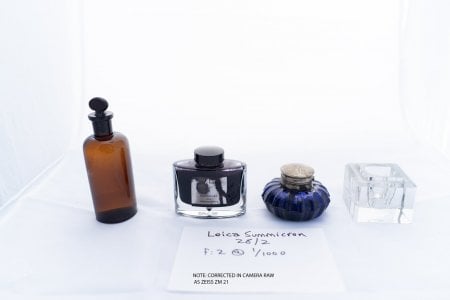
As mentioned above, and for reasons that I don't understand, Adobe has no vignette slider for the Leica M wide angle lenses. I am sure there is some lore about this, but for me it is just annoying. But if you walk through the menus for other manufacturers, you can usually find something that works. I do think that there is an advantage to starting with a file that needs as little manipulation as possible. After all, in the test pics above, there is no detail or color in the corners of the image. In a particular photo, you may not have the latitude to make these adjustments. Pulling in the other direction, I also think that the more "headroom" you have to make adjustments, the better. So take from it what you will. I can imagine, for instance, wanting the pictures of a series to have a similar color balance or rendering and so choosing Leica 28, 50, and 90 lenses as a matched set for a day, without getting hung up about vignetting as an issue. You can also be shooting in a manner, or a location, where vignetting works for you, or where it is utterly irrelevant.
For example, here's an uncorrected shot from further up in the thread made with the same 28 Summicron as above, wide open:
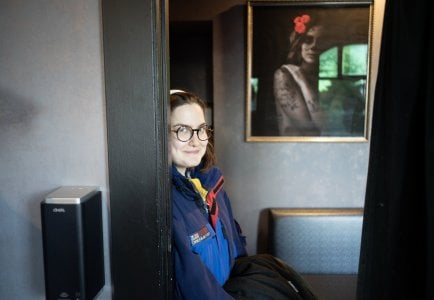
Vignetting in the corners? Who cares? Not me: the image works.

Here is the same image, opened in Camera RAW and processed with the canned Adobe profile as a Zeiss ZM 21 Biogon:

As mentioned above, and for reasons that I don't understand, Adobe has no vignette slider for the Leica M wide angle lenses. I am sure there is some lore about this, but for me it is just annoying. But if you walk through the menus for other manufacturers, you can usually find something that works. I do think that there is an advantage to starting with a file that needs as little manipulation as possible. After all, in the test pics above, there is no detail or color in the corners of the image. In a particular photo, you may not have the latitude to make these adjustments. Pulling in the other direction, I also think that the more "headroom" you have to make adjustments, the better. So take from it what you will. I can imagine, for instance, wanting the pictures of a series to have a similar color balance or rendering and so choosing Leica 28, 50, and 90 lenses as a matched set for a day, without getting hung up about vignetting as an issue. You can also be shooting in a manner, or a location, where vignetting works for you, or where it is utterly irrelevant.
For example, here's an uncorrected shot from further up in the thread made with the same 28 Summicron as above, wide open:

Vignetting in the corners? Who cares? Not me: the image works.
Last edited:
tcmx3
Established
nice ink choice. (and test)
the only thing I'll add is that it's important to consider if you want to go down this path the length of the adapter. even the Leica M one is thicker than one might think, the FTZ adapter is dang near as long as the Z mount lens.
the only thing I'll add is that it's important to consider if you want to go down this path the length of the adapter. even the Leica M one is thicker than one might think, the FTZ adapter is dang near as long as the Z mount lens.
Benjamin Marks
Mentor
This is what the C/V 35/1.2 Nokton can do on the Z8. Between the lens' native speed and the Z8's low light performance, I can hardly think of a picture it won't make. This was taken today in open shade with the camera set at ISO 64 and the lens wide open. I know some folks like the snappy, high contrast look that this camera can produce, but there is also something to be said for a long tonal scale. I made this with the Techart v.2 adapter. I think that thing is going to get a lot of use.
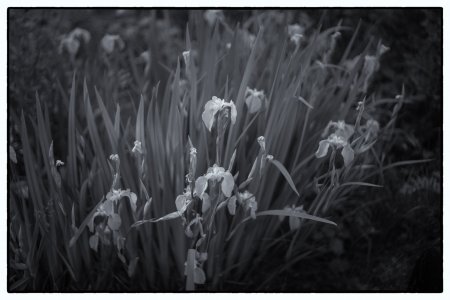

Benjamin Marks
Mentor
35photo
Well-known
Tweak the tone curve a bit in Lightroom assuming you are shooting RAW.... To not have that stark white.... Its not going to 100% a film look... but it will make it look nicerZ8 with the Leica Summicron 50 f/2 "v.III" - I'd like to do more with my manual focus glass and focus-peaking, but it needs to be a time when I can chill for a bit and not worry about delivering work. I kinda miss the halation with the highlights though, as opposed to shooting film. If I'm going to go through the work of manual-focus, I want also the rest of the "look".
View attachment 4837238
35photo
Well-known
Would do say this adapter works well for M lenses on the Nikon Z?M-mount in a Fotodiox helical adapter
Also is it generally accepted that the Nikon Z cameras are the best for adapting 3rd party lenses based on your research?
Thanks for the great info in this thread!
Benjamin Marks
Mentor
In general, I would say that the Techart v.2 adapter works as advertised. Autofocus may be a tad slower than with the native lenses, but it is a great solution for general photography if you want to use your Leica M glass. You have to be careful how you set up the autofocus settings, though, as if you have too broad an AF area, the adapter is going to hunt if you have a busy background. That said, it is faster than the magnify-recompose-shoot routine that I have adopted with most of my non-Nikon glass. I assume at some point there will be a version of this for older Nikon AiS lenses (if there isn't already). I will probably get that too.Would do say this adapter works well for M lenses on the Nikon Z?
Also is it generally accepted that the Nikon Z cameras are the best for adapting 3rd party lenses based on your research?
Thanks for the great info in this thread!
As to the second question, I really have no idea what is generally accepted. In my case, I have a large number of older Nikon lenses and adapting them to the Z8 seemed to be the path of least resistance. There was some chatter about the sensor stack on the Z8 being thinner than Sony's and this tending to give better performance with wide angle lenses. But I don't have a point of comparison for that. I will say that all the wides I have used (28 and wider) vignette somewhat, and that I'd reach for an SLR lens before an M-mount wide, all other things being equal. That said, as you can see from the thread above, you can work with the files, whichever lens produced them, and depending on your subject, it may not matter at all. I do know that this camera is the most powerful, versatile photographic tool I have ever own. And with great power comes. . . great complexity(?). I had my M9 out this weekend and the thing is just laid out simply by comparison. So much fun to turn your brain to it's left side and focus on composition and exposure only as opposed to trying to remember whether you've coded the lens properly in the verdamnt manual lens menu. Ugh. Maybe the whole thing is an IQ test.
I am happy with my purchase, though and feel like this camera is a "home run" for what I want it for. The acid test will be this weekend when photographing a friend's wedding. Now if I can just make sure that the subject eye-lock feature is on and I haven't accidentally chosen "Cats" in the subject matter menu.
Benjamin Marks
Mentor
Some poor macro comparisons. I say "poor" because these are all handheld and I quickly realized that small variations in the subject-to-lens distance are going to introduce differences that will distract the viewer. I will say that these three series are from the native 105/2.8 Macro-S lens, the Contax 100 Macro-Planar, and the Leica 90 Summicron-R with a Fotodiox helical adapter. Unless you count all the data that gets thrown out of these massive files in order to post them here, all images are straight out of the camera, made with AE with one stop of underexposure dialed in. I had hoped that I'd be able to see some "fingerprint" of one lens design over/compared to the others, but I can't. Still the poppies are blooming, and although I am a fairly indifferent floral/macro photographer, it was what was available this morning.
We are also indiffernt gardeners, taking a Darwinian approach to what survives in the backyard. The woman who owned our home before us (two homeowners ago) was an avid gardener, though, and we are constantly surprised by what has survived our neglect. Today's gift was the poppy.
So here it is with the native Nikon 100/2.8 macro lens. This lens is just such a beast in terms of its production. Makes me feel like I have graduated up a step or two just by being able to heft the thing. And the images!
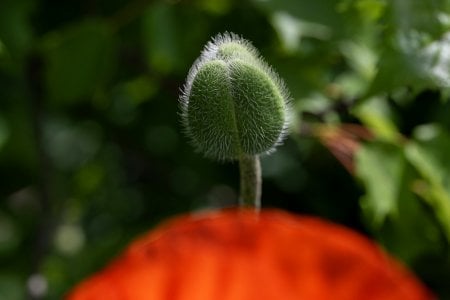
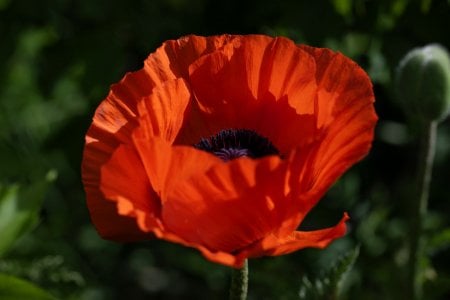
We are also indiffernt gardeners, taking a Darwinian approach to what survives in the backyard. The woman who owned our home before us (two homeowners ago) was an avid gardener, though, and we are constantly surprised by what has survived our neglect. Today's gift was the poppy.
So here it is with the native Nikon 100/2.8 macro lens. This lens is just such a beast in terms of its production. Makes me feel like I have graduated up a step or two just by being able to heft the thing. And the images!


Last edited:
Benjamin Marks
Mentor
Benjamin Marks
Mentor
And here is what the 90 Summicron did:
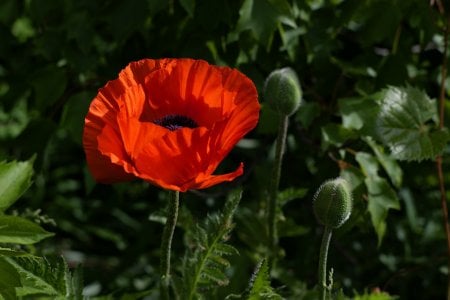
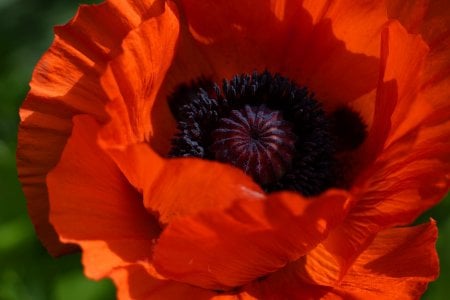
You all will have to let me know whether the saturation looks OK as posted. The reds on my calibrated monitor just POP. Not as sure though on the world's laptop. That's one the ironies of digital photography. In general, we put all of this effort into tweaking our photos "just so" and they are viewed on who-knows-what equipment. Ansel Adams is spinning in his grave like a drill bit.
[Edit: well, I just couldn't take it. I went back and tweaked the saturation 10-13 quatloos (or whatever those units are) for each of the picture to try and get to what I see on my calibrated monitor. . . still not sure it is there. It is an interesting problem as what separates these lenses, in my view, is fairly subtle differences in how they render color. If choice of monitor obliterates these, where does that leave you? Maybe with some detailed flower pictures that don't tell you much as a comparison.]


You all will have to let me know whether the saturation looks OK as posted. The reds on my calibrated monitor just POP. Not as sure though on the world's laptop. That's one the ironies of digital photography. In general, we put all of this effort into tweaking our photos "just so" and they are viewed on who-knows-what equipment. Ansel Adams is spinning in his grave like a drill bit.
[Edit: well, I just couldn't take it. I went back and tweaked the saturation 10-13 quatloos (or whatever those units are) for each of the picture to try and get to what I see on my calibrated monitor. . . still not sure it is there. It is an interesting problem as what separates these lenses, in my view, is fairly subtle differences in how they render color. If choice of monitor obliterates these, where does that leave you? Maybe with some detailed flower pictures that don't tell you much as a comparison.]
Last edited:
tcmx3
Established
And here is what the 90 Summicron did:
View attachment 4838786
View attachment 4838787
You all will have to let me know whether the saturation looks OK as posted. The reds on my calibrated monitor just POP. Not as sure though on the world's laptop. That's one the ironies of digital photography. In general, we put all of this effort into tweaking our photos "just so" and they are viewed on who-knows-what equipment. Ansel Adams is spinning in his grave like a drill bit.
[Edit: well, I just couldn't take it. I went back and tweaked the saturation 10-13 quatloos (or whatever those units are) for each of the picture to try and get to what I see on my calibrated monitor. . . still not sure it is there. It is an interesting problem as what separates these lenses, in my view, is fairly subtle differences in how they render color. If choice of monitor obliterates these, where does that leave you? Maybe with some detailed flower pictures that don't tell you much as a comparison.]
up close I feel like there's little difference between the good macro lenses these days. this is partially due to homogenization of optical layouts because of computer assisted lens design, but also just the nature of the way we take close up shots and how much subject/background distance there is which helps a lot.
to me most of the differences are practical or more revealed when these lenses are used more as general purpose short telephoto lenses. the S version IMO is easily Nikon's best effort to date in that respect. before I would never have chosen a Nikon macro over an Olympus or Leica one (the Zeiss ones are a bit less to my taste).
Share:
-
This site uses cookies to help personalise content, tailor your experience and to keep you logged in if you register.
By continuing to use this site, you are consenting to our use of cookies.

